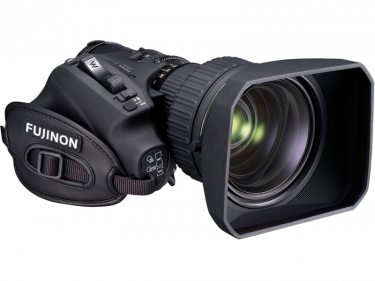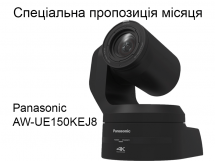| Українська | English | |||||||||||
|
|||||||||||
| News | About company | Service-centre | OB Van/SNG Rental | NextGen Energy Solutions | Contact us |
|
|
Engineering Service, Inc.
» News News For many years now, we have all been well aware of the FUJINON optical devices from the manufacturer FUJIFILM, with these being a worldwide benchmark in terms of high-quality, present in our daily work with a wide range of lenses on offer. In 2015, the Company launched its debut zoom lens for television, offering exceptional optic performance levels for 4K cameras with 2/3 of an inch lens mount format, owing to the increase of 4k content availability. With this launch, the “UA” series came into being, which encompasses lenses specially designed to offer cutting-edge technical and constructive characteristics with optic performance that allows for 4K compatibility in all type of recordings. Currently, within the “UA” series, we can find eight models which perfectly fulfil our 4K image capturing needs.
The newest member of the “FUJINON UA” family, the UA 24×7.8BERD, hit the shelves in January last year, surprising, with regard to its relatives in the “UA” family, with an angular aperture measuring 7.8mm and the ability to double its focal distance, reaching as far as 374mm in zoom mode using the duplicator, a series of performance figures hitherto unknown for broadcast optics compatible with 4K. The construction technology of the UA 24×7.8BE offers us a high-precision optic in an entire set weighing (lens plus parasol) of merely 2.1kg and a size of just 220.5mm. These figures are sufficient to consider it both compact and light. Fujifilm-UA-24x7-8BERD-4K-Lens-DetailThe research and development team has clearly pulled out all the stops when undertaking the construction of this lens, with excellent optic performance for 4K image capture in the entire range offered by the zoom. The optic is manufactured with HT-EBC (High Transmittance Electron Beam Coating) patented by FUJIFILM (multiple coating process for lenses, thus ensuring high-performance in optic transmissions close to 99% and with just 0.2% reflexion rate within a wide light spectrum, which drastically reduces reflections, along with the effects known as “ghosting”, alongside aspherical technology to increase light transmission and reduce colour palette aberrations, which is of the utmost importance when we need to film content in 4K HDR. It is worthwhile highlighting that the maximum aperture range is f1.8, which allows for unrivalled performance for 4K recordings. Similarly, the incorporation in the inner construction of the “iris” of new blades for aperture/closure, which takes us in the direction of a more circular aperture, providing a bokeh (term used to refer to the quality and merits of the soft-focus function) softer and therefore smoother, and more attractively visually. « To the list of news |
|
|||||||||||||||||
 |
+38 (044) 593-18-20 +38 (073) 593-18-20 +38 (096) 532-96-82 +38 (095) 532-96-82 Service center Telegram @Engineer_Service |

|
|
|||||
 |
e-mail: engineer-service.tv 15 Vavylovykh str., Kiev, 04060, Ukraine Authorized service centre of Panasonic, Sony, JVC, Fujinon, Canon |
|||||||







